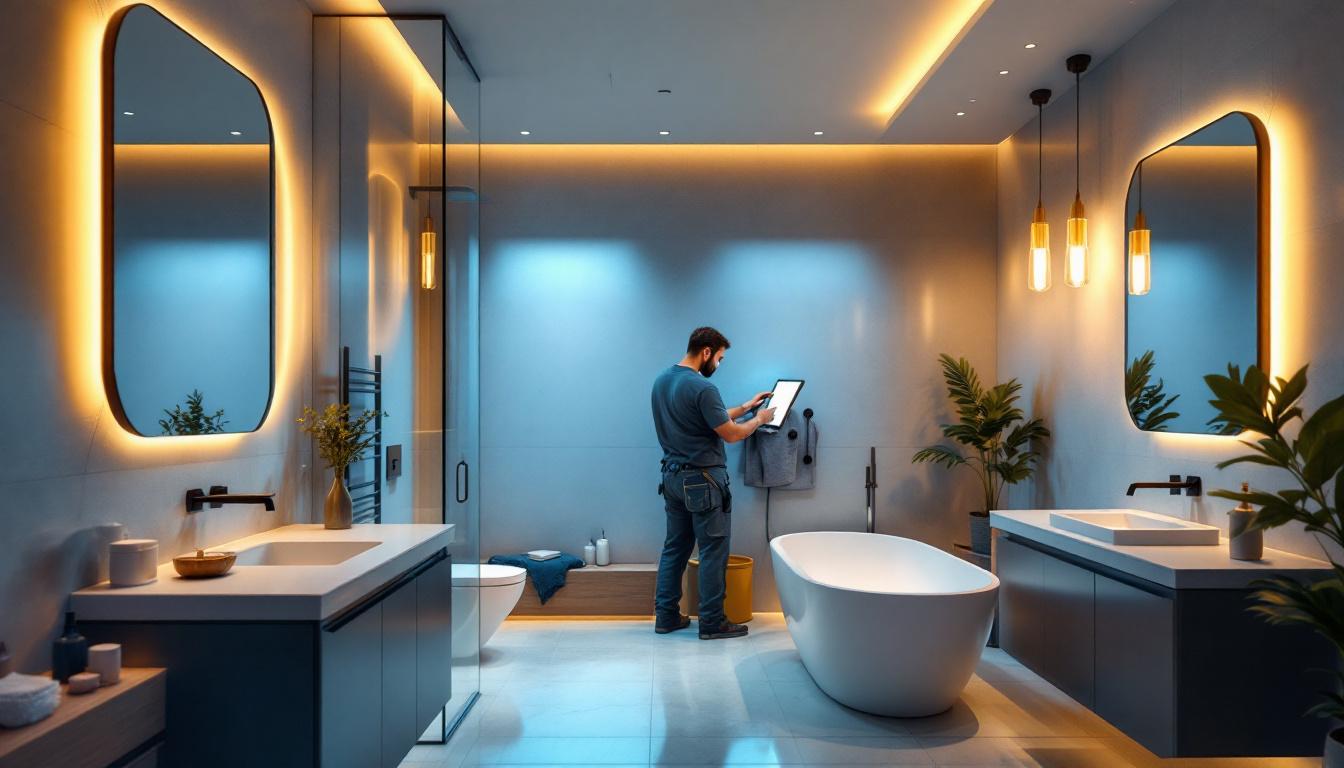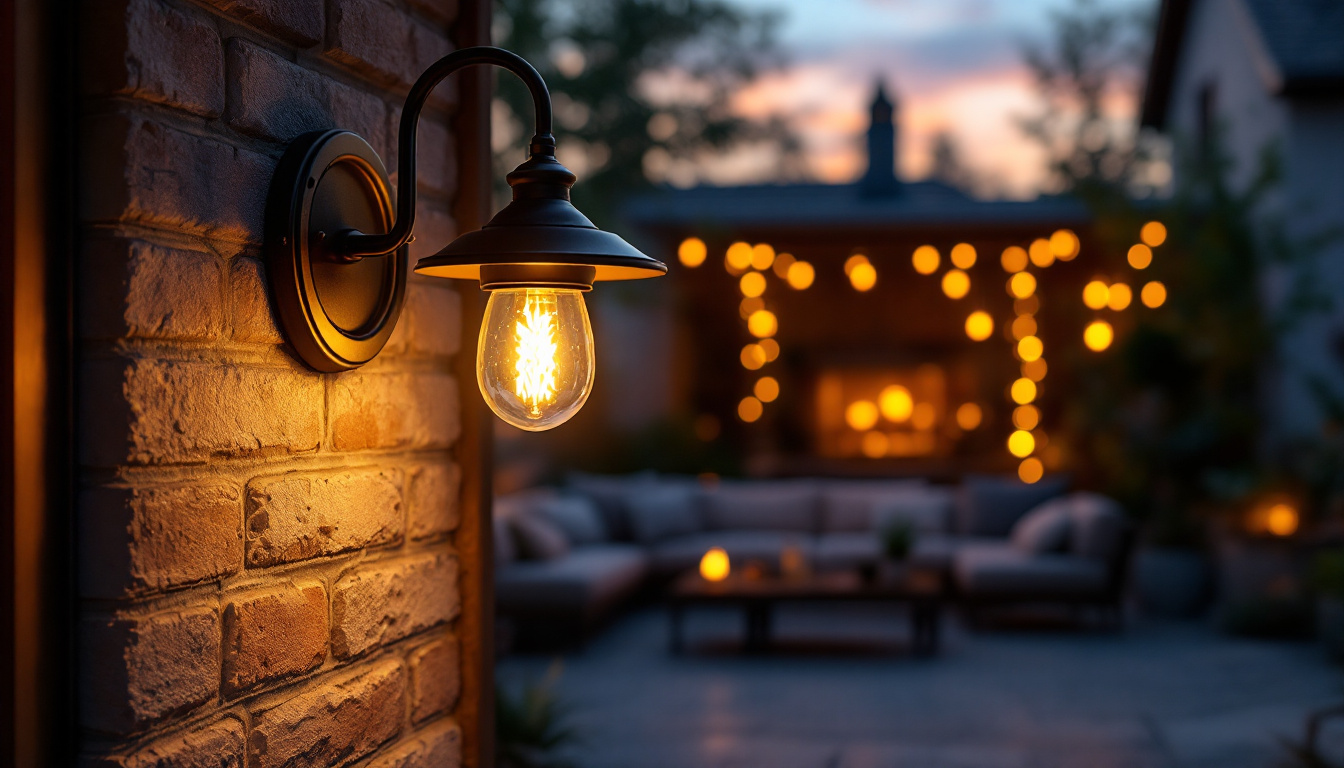
The lighting industry is undergoing a significant transformation, driven by advancements in technology, sustainability concerns, and changing consumer preferences. Among the many factors influencing this evolution, standard lightbulb sizes play a crucial role. Understanding these sizes is essential for lighting contractors who aim to provide effective solutions for their clients. This article delves into the importance of standard lightbulb sizes, their implications for the industry, and how they affect both design and functionality in various applications.
Standard lightbulb sizes refer to the dimensions and shapes of lightbulbs that are widely accepted and used in the industry. These sizes are typically defined by the American National Standards Institute (ANSI) and are crucial for ensuring compatibility with fixtures and sockets. Common sizes include A19, A21, BR30, and others, each serving different purposes and applications.
Understanding these sizes is vital for lighting contractors as they navigate the complexities of lighting design and installation. The right bulb size not only affects the aesthetic appeal of a space but also impacts energy efficiency and overall performance. As the industry evolves, staying informed about these standards becomes increasingly important. For instance, the shift towards energy-efficient lighting solutions has prompted many manufacturers to innovate within these standardized sizes, allowing for more sustainable options without sacrificing quality or compatibility.
Lightbulbs come in various shapes and sizes, each designed for specific applications. The A-series bulbs, such as A19 and A21, are among the most common household bulbs, characterized by their pear-like shape. The BR series, including BR30 and BR40, are used primarily for recessed lighting and track lighting, offering a wider beam spread. These bulbs are particularly favored in settings where ambient lighting is essential, such as living rooms and kitchens, where a warm, inviting atmosphere is desired.
Other notable types include the MR series, which are often used in commercial settings for accent and display lighting, and the GU series, which are commonly found in specialty fixtures. The MR series, with their compact design, allows for precise lighting control, making them ideal for highlighting artwork or merchandise in retail environments. Each of these bulb types has standardized sizes that ensure they fit into their respective sockets, making it essential for contractors to understand which bulbs are suitable for different installations. Additionally, the rise of smart lighting technologies has introduced new bulb types that integrate seamlessly with existing standards, providing users with enhanced control over their lighting environments.
Standardization in lightbulb sizes brings numerous benefits to the lighting industry. It simplifies the selection process for contractors, allowing them to quickly identify the appropriate bulbs for their projects. This efficiency not only saves time but also reduces the likelihood of errors during installation. Furthermore, standardized sizes help consumers make informed decisions when replacing bulbs, as they can easily find compatible options without needing to consult complex specifications.
Moreover, standard sizes facilitate compatibility across various manufacturers, promoting competition and innovation within the market. As new technologies emerge, such as LED and smart lighting solutions, maintaining standard sizes ensures that consumers have access to a wide range of options without being limited by proprietary designs. This adaptability is crucial as the demand for energy-efficient and environmentally friendly lighting continues to grow, pushing manufacturers to develop products that meet both consumer needs and regulatory standards. Additionally, the standardization process often involves collaboration among industry stakeholders, which can lead to advancements in safety and performance, ultimately benefiting both consumers and professionals alike.
LED technology has revolutionized the lighting industry, leading to significant changes in bulb sizes and shapes. Unlike traditional incandescent bulbs, which have fixed dimensions, LEDs can be designed in various forms while still adhering to standard sizes. This flexibility allows for more creative and efficient lighting designs. For example, the ability to create slim, elongated LED strips has opened up new possibilities for accent lighting in both residential and commercial spaces. These strips can be easily integrated into architectural features, providing ambient lighting that enhances the overall aesthetic without compromising on functionality.
Additionally, LEDs are known for their energy efficiency, long lifespan, and lower heat output. As a result, many contractors are transitioning to LED solutions, which often require a different approach to sizing and fitting. Understanding how LED technology interacts with standard lightbulb sizes is essential for contractors looking to provide modern and efficient lighting solutions. The shift to LED also encourages innovation in fixture design, as manufacturers are now creating products specifically tailored to optimize the performance of LED bulbs, further enhancing the lighting experience.
As LED technology continues to advance, new standards are emerging to accommodate these changes. For instance, the introduction of new bulb shapes and sizes, such as the A19 LED, has provided contractors with more options for energy-efficient lighting. However, with these new options come new challenges in ensuring compatibility with existing fixtures. The rapid evolution of LED technology means that contractors must frequently update their knowledge and skills to keep pace with new products and installation techniques. This ongoing education is vital, as it empowers contractors to make informed recommendations to clients, ensuring that they receive the most effective and suitable lighting solutions for their needs.
Contractors must stay informed about the latest developments in bulb technology and standards to ensure they are offering the best solutions to their clients. This adaptability is crucial in a rapidly evolving industry, where consumer preferences and regulations are constantly shifting. Networking with industry professionals and attending trade shows can provide valuable insights into emerging trends and technologies, helping contractors to remain at the forefront of the lighting sector.
The push for energy efficiency and sustainability has placed even greater importance on standard lightbulb sizes. As consumers become more environmentally conscious, they seek lighting solutions that not only meet their aesthetic needs but also reduce energy consumption. Standard sizes help facilitate the widespread adoption of energy-efficient technologies, such as LEDs, by ensuring compatibility across various fixtures. This compatibility is essential for retrofitting existing installations, allowing homeowners and businesses to upgrade their lighting without the need for extensive renovations.
Furthermore, many governments and organizations are implementing regulations that encourage or mandate the use of energy-efficient lighting solutions. Understanding these regulations and how they relate to standard lightbulb sizes is essential for contractors who want to remain competitive and compliant in the market. The trend towards sustainability is also influencing product development, as manufacturers are increasingly focusing on creating LED bulbs that not only consume less energy but also utilize recyclable materials in their construction. This commitment to sustainability not only appeals to eco-conscious consumers but also aligns with global efforts to reduce carbon footprints and promote environmental stewardship.
When it comes to lighting design, choosing the right bulb size is just as important as selecting the appropriate fixture. The size of a lightbulb can significantly affect the overall look and feel of a space. For instance, larger bulbs may create a more dramatic effect, while smaller bulbs can provide subtle illumination.
Contractors must also consider how different bulb sizes interact with the design of the fixture itself. A well-designed fixture will complement the bulb size, enhancing the overall aesthetic of the space. This attention to detail can make a significant difference in the final outcome of a lighting project.
A cohesive lighting plan involves more than just selecting the right bulb sizes; it also requires an understanding of how those sizes fit into the broader design scheme. Contractors should consider factors such as color temperature, brightness, and beam angle when developing a lighting plan.
By taking a holistic approach to lighting design, contractors can create spaces that are not only functional but also visually appealing. This comprehensive understanding of lightbulb sizes and their implications is essential for delivering successful lighting solutions.
Educating clients about the importance of standard lightbulb sizes can enhance the contractor-client relationship. Many consumers may not be aware of how bulb size impacts energy efficiency, aesthetics, and overall performance. By providing this information, contractors can empower clients to make informed decisions about their lighting choices.
Effective communication also involves discussing the benefits of various bulb types and sizes. For instance, highlighting the advantages of LED technology over traditional incandescent bulbs can help clients understand why certain sizes may be more suitable for their needs. This level of engagement fosters trust and encourages clients to rely on contractors for their lighting projects.
As the lighting industry continues to evolve, the future of standard lightbulb sizes remains a topic of interest. With ongoing advancements in technology and changing consumer preferences, it is likely that new standards will emerge to accommodate these shifts. Contractors must remain vigilant and adaptable to stay ahead of these changes.
Furthermore, the rise of smart lighting solutions is also influencing the landscape of lightbulb sizes. Smart bulbs often come in unique shapes and sizes, which may not conform to traditional standards. As these technologies gain popularity, the industry may need to reevaluate existing standards to ensure compatibility and functionality.
Innovation will play a critical role in shaping the future of standard lightbulb sizes. As manufacturers develop new technologies and designs, contractors must be willing to embrace these changes and incorporate them into their offerings. This willingness to adapt can lead to new opportunities for growth and success in the lighting industry.
Moreover, staying informed about emerging trends and technologies will enable contractors to provide cutting-edge solutions to their clients. By being proactive in their approach, contractors can position themselves as leaders in the industry, ready to tackle the challenges and opportunities that lie ahead.
In conclusion, standard lightbulb sizes are a fundamental aspect of the lighting industry that cannot be overlooked. For lighting contractors, understanding these sizes is essential for providing effective solutions that meet the needs of clients. As the industry continues to evolve, staying informed about new technologies, regulations, and design trends will be crucial for success.
By embracing innovation and adapting to changes in the market, contractors can ensure they remain competitive and continue to deliver high-quality lighting solutions. The growing importance of standard lightbulb sizes is a testament to the dynamic nature of the lighting industry and the need for professionals to stay ahead of the curve.
Ready to elevate your lighting projects with the right standard lightbulb sizes and the latest in lighting technology? Look no further than LumenWholesale. Our extensive selection of spec-grade lighting products ensures that you have access to the highest quality options at unbeatable wholesale prices. Say goodbye to local distributor markups and hello to superior lighting solutions that fit your budget. With free shipping on bulk orders, LumenWholesale is your go-to source for premium lighting without the hidden fees. Don’t compromise on quality or value—explore our collection today and discover the perfect blend of affordability and performance for your lighting needs.

Discover the best bathroom recessed lighting options and learn how lighting contractors can boost efficiency, safety, and aesthetics—unlock expert tips today!.

Discover the essential benefits of lockable plugs for lighting contractors.

Illuminate your outdoor spaces with confidence using our comprehensive lighting contractors’ checklist.

Discover the essential checklist for lighting contractors, covering key electrical parts and components necessary for successful installations.